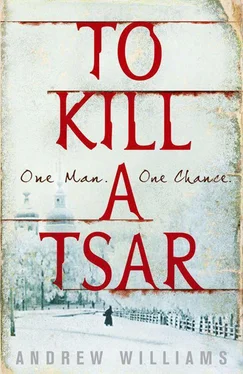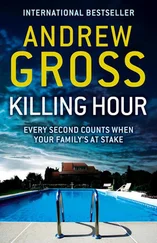The membership of The People’s Will was drawn from all classes of Russian society with the gentry and the educated especially well represented in its ranks, as too were women; Sophia Perovskaya and Vera Figner were particularly influential members of the group. One of their male comrades on the executive committee noted that ‘the girls are fiercer than our men’. A number of the female recruits to The People’s Will became involved in revolutionary politics while studying medicine in Switzerland. One such was Vera Figner, whose gripping account of her life, Memoirs of a Revolutionist , has been an important source for this story. Women like Figner and Perovskaya fell in love and had affairs with male comrades but not at the expense of their commitment to the party and revolution. ‘A man who admitted putting me above the cause, even in a moment of passion,’ the revolutionary Ekaterina Obukhova wrote to a friend in 1879, ‘would destroy everything that connected us’ (as quoted in Barbara Alpern Engel, Mothers and Daughters: Women of the Intelligentsia in Nineteenth-Century Russia ). Vera Figner was not the only revolutionary to leave her husband because he did not share her political views.
More background on the revolutionaries of The People’s Will and their world can be found on the website www.andrewwilliams.tv.
I drew on both primary sources and published histories for my account of the attempts on the Tsar’s life and his final assassination. A number of the exchanges between the terrorists in the story are based on written records of the group’s secret meetings left by those who were there. In her memoir Olga Liubatovich describes the party and séance that Frederick and Anna attend on New Year’s Eve ( Five Sisters: Women Against the Tsar , edited and translated by Barbara Alpern Engel and Clifford N. Rosenthal). I have drawn details of the printing press and descriptions of some of the leading terrorists from Praskovia Ivanovskaia’s published account of her time in The People’s Will. Both Figner and the revolutionary Katerina Breshkovskaia (in her memoir Hidden Springs of the Russian Revolution ) left vivid accounts of interrogation and imprisonment in the House of Preliminary Detention and the St Peter and St Paul Fortress. I visited and photographed the streets and exteriors of the apartments in St Petersburg that were used by The People’s Will between 1879 and 1881 as well as many of the other buildings mentioned in the story. Photographs, contemporary engravings and reports from British, French and Russian newspapers and periodicals were useful for descriptions of the terrorists, their attempts to kill the tsar, trials and executions. The newspapers were also able to provide more general information about life in the empire, the health of the tsar’s subjects, winter sports and royal engagements. The Times ’s correspondent George Dobson was a particularly helpful source and an intelligent liberal commentator on the nihilists and the challenge they presented to imperial authority. Dobson was the newspaper’s man in St Petersburg for more than twenty-five years, and only left the city with the Bolshevik revolution in 1917 after a short spell of imprisonment in the St Peter and St Paul Fortress.
For the background and upbringing of my heroine Anna, I drew inspiration from the early life of the formidable socialist revolutionary Elizaveta Kovalskaia. Kovalskaia’s father was a landowner in what is now the eastern Ukraine, her mother one of his serfs. Anna is very conscious of the village and her roots, and like another important revolutionary figure, Vera Zasulich, is inspired by a Kondraty Ryleev poem celebrating a Ukrainian uprising. At the end of To Kill a Tsar Anna is obliged to give birth in prison as the revolutionary Geisa Gelfman was forced to do in September 1881. Gelfman’s baby was taken from her, marked ‘parents unknown’, and sent to an orphanage. Gelfman died in prison six months later. Anna is able to escape from custody on her journey east into exile. Elizaveta Kovalskaia managed to do the same in February 1882 but was later apprehended. A number of terrorists were more successful. In July 1878 Olga Liubatovich escaped from western Siberia by pretending to commit suicide.
Most of the revolutionaries mentioned in To Kill a Tsar spent many years in prison. Both Alexander Mikhailov and his spy inside the Third Section, Nikolai Kletochnikov, died in the cells of the St Peter and St Paul Fortress in 1883. Stepan Khalturin, the carpenter responsible for the explosion at the Winter Palace, was arrested and executed in 1882. As recounted in this book, Grigory Goldenberg committed suicide in prison when he realised that his testimony had led to the arrest of many of his former comrades. In my story I endeavour to reflect the appalling anti-Semitism in Russian society at this time. Rumours that the Jews were involved in the assassination of Alexander II were used as an excuse to launch pogroms in Kiev, Odessa and Warsaw.
Andrei Zhelyabov, Sophia Perovskaya and Nikolai Kibalchich were executed with two of the bombers on 3 April 1881. After their execution the ‘Venus of the revolution’, Vera Figner, became the leader of The People’s Will until her arrest in 1883. She was imprisoned in the St Peter and St Paul then the Schlüsselburg Fortresses and spent many years in solitary confinement. Finally released in 1905, she died in Moscow during the Second World War. Olga Liubatovich gave birth to a daughter in Switzerland whom she placed with foster parents. The baby died six months later while Olga was in Russia attempting to organise the escape from prison of her child’s father, Nikolai Morozov. She was arrested in 1882 and banished without trial to eastern Siberia where she spent the next twenty years in exile.
In 1886 a young revolutionary called Alexander Illyich Ulyanov was inspired by the example of The People’s Will to join a small group of terrorists. On 1 March 1887 — six years to the day after the death of Alexander II — Ulyanov and his comrades were arrested and charged with plotting to assassinate the new tsar. Two months later he was hanged at the Schlüsselburg Fortress where many of The People’s Will terrorists were imprisoned. Ulyanov was the older brother of the man who was to lead the Russian Revolution in 1917: Vladimir Lenin.
The hero of my story, Frederick Hadfield, is from a British community that played an important part in the life of St Petersburg and the empire. The British began to arrive in the city during the reign of its founder Peter the Great, and the first grand residential embankment built on the Neva came to be known as the English Embankment. Anglo-Russian trading dynasties established themselves here over the next two hundred years but there were prominent professionals too; in particular a number of medical men served the imperial court. Sir James Wylie (1768–1854) was the personal physician to three tsars and founded a hospital in St Petersburg. Another famous Scottish doctor at the court was Sir Alexander Crichton (1763–1856) who entered the service of Tsar Alexander I in 1803 as physician-in-ordinary, and six years later was appointed physician-general to the Russian medical department. Engineers and soldiers were also well represented in Anglo-Russian society. Hadfield’s mother’s family in To Kill a Tsar resembles the Griegs, who were prominent members of the British community for a hundred and fifty years. Admiral Sir Samuel Grieg was born in Scotland in 1736 and entered the service of the Russian navy. He was appointed the Empress Catherine’s naval commander-in-chief in 1775. Admiral Grieg chose to marry a Scots woman, and like many Anglo-Russians sent his son Samuel to university in Britain. Three more generations of the family lived on the English Embankment and served the empire in both a military and civil capacity. General Samuel Grieg — the third to bear the name — was appointed the tsar’s minister of finance in 1878, a post he held without distinction for two years.
Читать дальше












